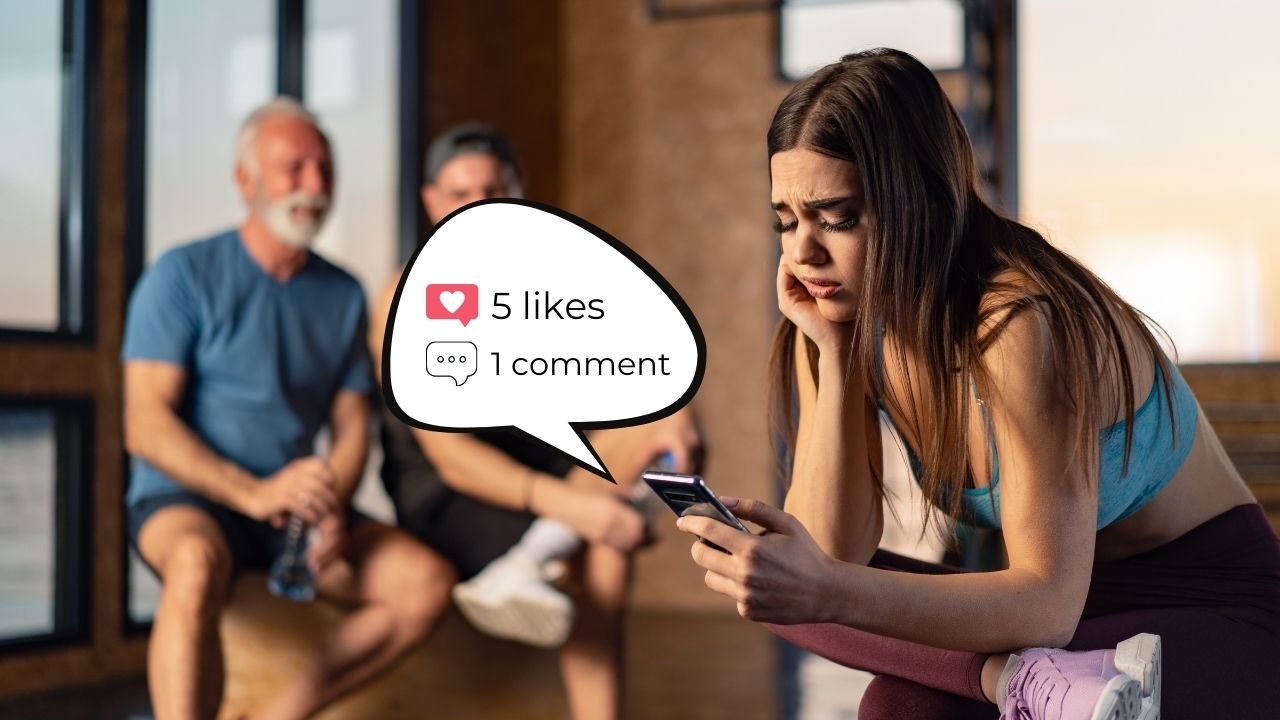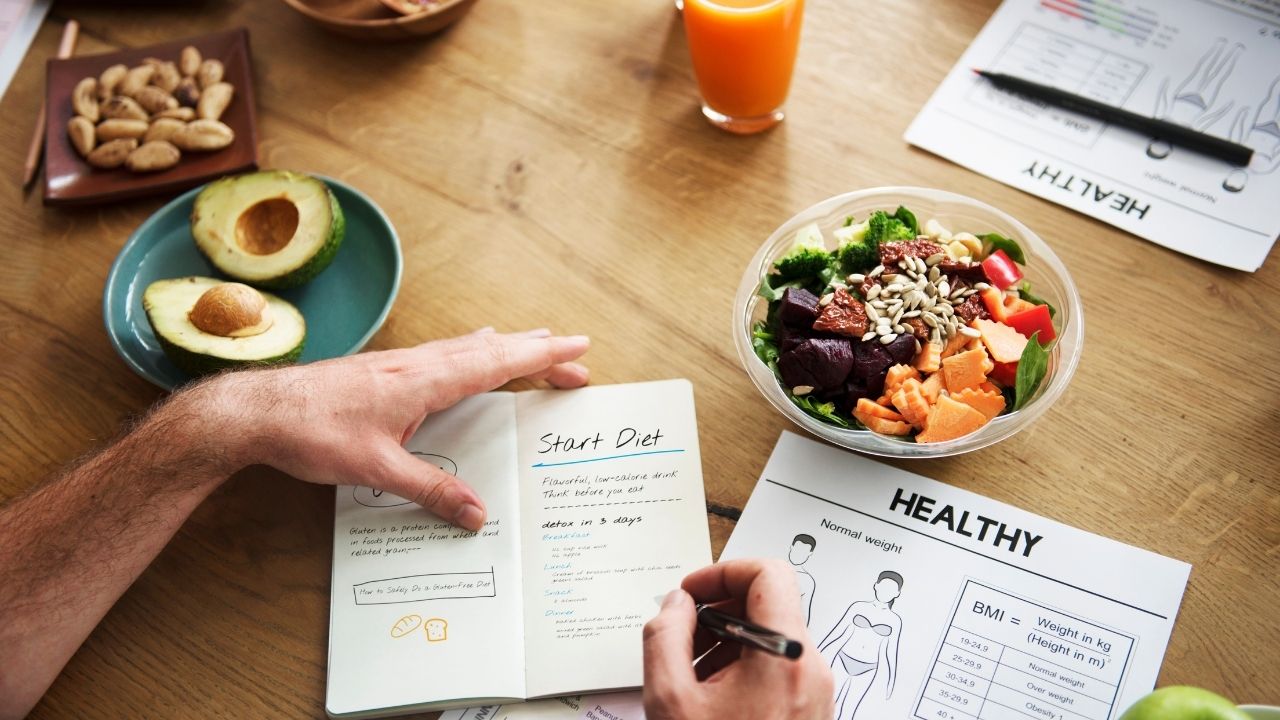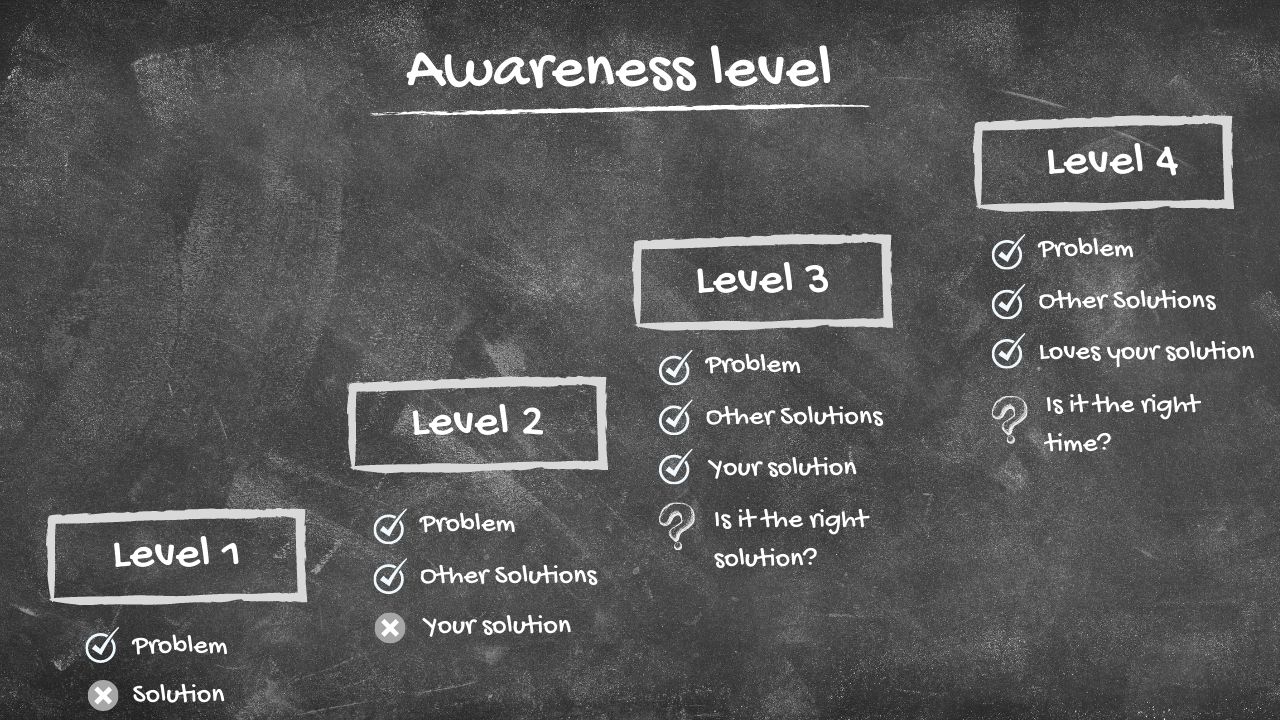
Every fitness business owner knows the importance of consistently posting valuable content on social media to grow their fitness business.
But most people underestimate the value they need to bring to their content to be truly successful.
Boost Your Client Retention with Trainerfu– Start Now!
Engage clients better and improve retention with Trainerfu’s features.
Try it freeThis is why only a few businesses see any real growth using social media, while the rest struggle to move the needle even after posting valuable fitness tips for months on end.
Time and time again, I've seen struggling fitness business owners fall into this trap. They think that as long as the content they're sharing is valuable they'll be able to build an audience in a few months and grow their business.
Instead, they end up wasting their efforts and ultimately give up on social media.

On the other hand, if you analyze how successful fitness business owners leverage social media, you'll notice they're able to create a powerful snowball effect with their content that allows them to:
- Not only deliver information but create real transformation
- Differentiate themselves and stand out from their competition
- Create demand for their products and services
- Build a personal bond that transcends business relationships
- And do all of this without wasting a ton of time

In this post, we will look into what I like to call the "Snowball Content Method", revealing the secrets of successful content creators and enabling you to generate a truck-load of content ideas so you can quickly and efficiently build an inventory of high-value content to keep your audience happy. No more worrying about what to write next, what approach to use, or feeling overwhelmed about writing content.
We've got a lot of stuff to cover (all of it important), so let's get rolling!
Here's a quick overview of what we'll be covering in this guide:
- How to come up with content topics that generate real transformation in your clients' lives
- How to come up with content topics that create demand for your service or products
- Finally, we'll talk about how to come up with content topics that build "the know & like" factors with your prospects
Part 1 – Content Topics That Generate Transformation

If you want to gain a massive following and be seen as an expert in your niche then it isn't enough just for your content to be good – it needs to transform the lives of your audience.
Unfortunately, most struggling fitness business owners mostly create dry, uninspiring content mainly focused on "how to do X", a.k.a. "informational content."
To bring real transformation (and be truly helpful) your content needs to do much more. Your content should, in the following order:
- Tell your audience what they're doing wrong. If someone doesn't think they are doing anything incorrectly, they are not going to be motivated to make any changes – especially big ones.
- Teach them what the correct thing is − and how to do it (aka, informational content)
- Motivate and inspire them to do the right thing
- Help them identify and remove any roadblocks from their path
- Share the same message in multiple different ways, reminding them and giving them new perspectives and angles, so that it becomes ingrained in their minds – this right here is the key to them achieving real transformation
Transformational content does a lot of the heavy lifting but the good news is, it's no more work to create than informational content.
Below is a step-by-step method that will help you come up with hundreds (yes, literally hundreds) of content topics to help transform the lives and practices of your audience:
Step 1: Identify the transformation your ideal audience wants

The first step in creating content that is transformational is to identify the kind of transformation your ideal clients are seeking.
Are your ideal clients 50 lbs overweight and looking to lose 25 lbs in the next 6 months?
Or,
Are they beginner powerlifters who want to be able to do 4 plate deadlifts?
The more specific you define the result your ideal clients are seeking, the better your content will resonate with them.
Step 2: Identify 4-5 content "pillars"

You already have a method to take your ideal client from point A to point Z. In this step, you'll break down your method into 4 or 5 pillars. You can think of a pillar as an area in the life of your ideal client that needs to be fixed in order to get them the results they want.
For example, if you help busy professionals lose weight then these might be the 5 pillars of your approach:
Step 3: Break down each pillar of content into subcategories

Now for each pillar, come up with steps that you would take from start to finish to deliver the benefit of that pillar to your ideal client. We'll call these individual steps "subcategories."
For example, you could break down the "Nutrition" pillar into following 7 subcategories:
- Macros calculation
- Meal Planning
- Meal Preparation
- Healthy recipes
- Grocery shopping
- Meal logging and calorie counting
- Smart restaurant eating
Step 4: Create content topics for each subcategory

Now we're finally ready to create content topics. Here are 6 types of content you can create for each subcategory you identified in the previous step:
" Mistakes"
This type of post highlights the common mistakes your audience is likely to make when accomplishing a task. These types of posts are good at getting readers' attention - they create a "curiosity gap", leaving readers wondering what the mistakes are, and whether they are guilty of any of them.
Example: "9 Seemingly Healthy Foods That Are Actually Bad For You."
" Myths"
This type of post addresses commonly held beliefs that are actually inaccurate and may even be harmful to your client and their goals.. Similar to "mistake" posts, they pique the reader's curiosity.
Example: "How Fat-Free Foods Are Actually Making You Gain More Weight"
An Ultimate Guide
This is a comprehensive informational content that teaches your audience how to accomplish their goals . Audiences love having a comprehensive resource – it simplifies their search for information, and helps them feel secure. It also gives them a new way of accomplishing their goals .
Example: "A Beginner's Guide to Meal Planning"
Case Studies / Examples / Interviews
These types of content both educate and inspire audiences to take action. They can learn from the real-life examples of other people,who have achieved amazing results, and this in turn can give them either a boost of inspiration to get started, or motivation to keep going with their own goals.
Example: "How Melanie lost 25 lbs While Extensively Travelling for 3 Months"
A Roundup Post
This one is simply a curated list of content that your audience will find useful. But don't be deceived by the word "simple" – readers love lists and resources. It's something they can bookmark and use again and again.
Example: "20 Surprisingly Healthy Fast Food Orders"
Tools & Services
These are simple tools and services that help your audience more easily achieve their goals.
Example 1: "5 Online Meal Prep Services That Can Save You 10 Hours Per week"
Example 2: "4 Meal logging Apps That Will Keep You Accountable"
Together these different content types create a powerful arsenal of resources − a mix of information and inspiration alike that has everything you need to transform the lives of your audience.
If you take just a little bit of time to do this exercise, you should be able to come up with 5 to 10 content topics for each subcategory.
Ready for some math? 5 pillars, 7 subcategories and 10 content topics in each subcategory will give you a total of 350 content topics. And we're just getting started.
Step 5: Reposition content
Let's stop and think for a moment about the topic at hand: Content marketing.
How many articles, videos, posts, books did you consume before you felt like you finally got a grip on content marketing and could start taking action? If you're like me, probably somewhere in the 100s'.
Most likely, every time you read a new piece of content you discovered a small new insight or considered a new angle – even though the content was not all that different from all other content you'd previously read (or listened to).
This is because as you read more content, your understanding of the topic becomes stronger and more solid, and you are better able to draw new insight from similar pieces of content. Even reading the same book (or article) multiple times, you'll find yourself discovering new insights.
Newsflash: it's the same story for your clients. They need to see the same message multiple times before they get it and take action.

The idea behind repositioning your content is using the content that you've already produced and dress it differently – approach it from a new angle, a new lens. This reinforces your message, helping it get through to your audience and the best part is that it's far more efficient than creating 100% original pieces of content from scratch each time.
Here are 2 helpful hacks I use to reposition all the content I write:
- Slice and dice content Take a lengthy, comprehensive piece of content – this guide you're reading right now, for example – and use sections of it to create new, smaller, stand-alone pieces of content.
- Same content, different angle Take a piece of helpful content you've written, and consider all the benefits as well as pitfalls it mentions. Next take each particular point, whether a benefit or a pitfall, and consider how you could spin a whole new piece of content just around that one particular piece of advice. See what new angles you can come up with when you focus closely on just one thing.
Let's take this guide right now as an example. Here are 20 pieces of new content I could create from this single piece of content (this guide):
- How to Generate Content Ideas That Don't Just Get You Likes, But Real Sales
- How to Produce Content That Builds a Personal Bond With your Audience
- This is Why You're Failing on Social Media Even After Posting Valuable Content Daily. And Here's How You Fix It.
- This is Why You're Not Bringing in Sales – Even After Creating Great, Engaging Content
- 3 Categories of Content You Need to Generate If You Want to Win on Social Media
- Wonder Why So Many successful Content Creators Share Their Personal Lives on Social Media?
- How to Get Your Audience to Rally Behind You and Spread Your Business Like a True Fan
- How to Generate 100's of Content Ideas That Provide Not Just Information, But REAL Transformation
- How to get 10x Your Content Generation Machine Without Spending Any Extra Time
- 7 Ways to Repurpose Your Content to Save You Time and Reinforce Your Message.
- The Secret Behind the Most Successful Social Media Content Creators
- 7 Types of Content You Can Generate From a Single How-to Article
- 3 Types of Content That Will Establish You as a Leader in Your Niche
- 4 Things Your Content Needs to Do to Transform the Lives of Your Audience
- How to Attract Prospects Who Have a Problem You Solve (But They Don't Know You Exist)
- How to Win Prospects From Your Competitors Even When They Don't Know You Exist
- 3 Types of Content to Share When Your Prospects are Checking You Out
- How to Build Demand for Your Service Through Your Content
- Never Ever Run Out of Content Ideas Again – An Ultimate Guide
- How to Generate 1000 Content Ideas to Grow Your Fitness Business
Believe it or not, I spent less than 20 minutes coming up with these 20 different topics. You don't need a ton of time to generate good ideas – rather, as you do a quick brainstorm session you'll find ideas coming to you naturally. Pick out the ones that seem the most promising and start there.
I have no doubt you could easily extract 40 more content topics from an ultimate guide like this. If you posted a piece of content every single day, that would still be enough for 2 months!
Step 6: Repurpose content using multimedia
Audiences consume content in many forms these days: written (text), images and infographics, podcasts and videos – to name some of the most popular. By repurposing your content using different forms of media you are able to make your content go further and be more engaging at the same time.

For example, you could first create a video on how to meal prep. Then you can take the same points covered in the video and use them to create a blog post. The beauty of this method is that not only are you using your content efficiently, you are reaching a wider audience: many people prefer reading their content, while others find videos more helpful. Other people like listening to audio content such as podcasts because it allows them to multi-task.
Remember how we talked about the importance of audiences getting the same message over and over in order to achieve transformation? This is another reason why multimedia is so powerful: the same message presented in different formats really helps it to stick.
By now you have enough content topics to build an audience and stand out from the crowd and establish yourself as an expert. Next you need to be able to get your audience to take action and actually pay for your service or product.
Let's take a close-up look at how to create content in order to do just that.
Part 2 – Content Topics That Create Demand for Your Service

Any prospects that become your paying client will go through these 4 levels of awareness:
Level 1: They have a problem but don't know that a solution exists.
Level 2: They're aware of a solution but don't know about your solution.
Level 3: They're aware of your solution but don't know if it's the right solution for them.
Level 4: They know your solution is the right one, but they're waiting for the right situation or the "right deal."
The goal of your content should be to quickly move your prospects through these awareness levels and convert them into your paying clients. The faster you move them, the more sales you'll be able to close.
Let's see what content ideas you need to generate for each awareness level.
Level 1
The content ideas on this level bring attention to the problem your prospects are facing.
Example: "You Can Get Rid of Your Back Pain Even if You Have a Sedentary Job"
Level 2
At this level your prospects know that there's a solution to their problem, but they're not aware of your solution. Your goal here is to create content that highlights the shortcomings of other solutions.
Example: "Why Crossfit is Hurting your Fitness Rather Than Helping It"
Level 3
At this level your prospects know that your solution exists but they're not sure if it's the right one for them. There are three types of content that really help move prospects to the next level:
- Success stories of your past clients
- Reviews
- Your Unique Selling Proposition, or USP (Example: "Why Online Training is the Best Choice for Busy Professionals")
Remember, success stories and testimonies aren't just powerful – they're transformational. Your content marketing is incomplete without them.
Level 4
At this level your prospects have already committed to working with you but they're still waiting for the "right time." The content here should help motivate them to take the final step and become your paying client.
Examples: "Limited time offer", "Bonus content", "Discount"
Just like with the previous sections, you can repurpose and reposition the content that you produce here for generating sales.
We've covered a lot of ground so far – feel free to use this guide as a reference whenever you need a refresher, or in case you can't quite take in everything the first time around.
Last but certainly not least, a successful fitness business needs to produce content aimed at the "Know & Like" factor. This one may seem a bit "counterintuitive" at first, but hang in there – this last factor is every bit as important, if not the most important, to your success.
Part 3 – Content Topics That Build the "Know & Like" Factors with Your Prospects

If you follow popular social media experts on Facebook or Instagram, you've no doubt noticed how they often share their personal lives on these platforms.
Ever wonder why they share their personal lives even though it doesn't deliver "value" to their audience?
The reason is simple. Before your prospects invest in you, they'll try to figure out two things:
- What is it like to work with you?
- Will they be able to relate to you? Specifically: what do you have in common? Would they feel comfortable sitting down and sharing a beer with you?
The following two types of content help answer these questions for your prospects and more quickly convert them into becoming your paying clients:
Shared Identities

All of us have many identities. We can be any combination of the following:
- Parents
- Dog (or cat) lovers
- Environmentalists
- Amateur chefs
- Entrepreneurs
- Nature lovers
And so on – these examples are just the tip of the iceberg. You can easily come up with more.
You'll notice that you are good friends with people with whom you share common identities. For this type of content, come up with two identities that you're most likely to share with your ideal client and use then to show your personal side.
For example: If you're a parent, and so is your ideal client, then share photos and funny stories of your kids, as well as your thoughts and struggles as a parent. Be vulnerable – be a real person.
Your ideal prospects will feel a personal connection with you much more readily through this type of content, and this brings them one step closer to becoming your converted, loyal client.
One important thing I want to mention here is that you need to be authentic. People are very good at sensing insincerity – it's hard to get away with, not to mention it's no fun trying to keep up a facade. And don't worry about showing your non-perfect side. No one is perfect – your imperfection is what makes you relatable.
" Behind the scenes"

This type of content lets your prospects experience what it's like working with you. You can do this by sharing photos or videos of:
- You working out with your clients
- Your studio or gym (and the people you work with, if any)
- Your victories and other happy moments with your clients
- You while working on your new transformation program
Quick tip: Both these types of posts are really great for short-lived content like Instagram and Facebook stories. They're easy to produce and don't need to be edited or "perfect-looking."
Final Thoughts
Now that we've covered Parts 1, 2 and 3 (good job hanging in there!), let's do some quick math once again:
- 5 content pillars
- 7 subcategories within each pillar
- 10 content ideas for each subcategory
- 5 repositioned pieces of content for each content idea
- 5 repurposed content pieces for each content idea, using multimedia
This brings us to a total of 3500 content ideas.

And that's just using the ideas from Part 1.It's fair to say that if you follow this method you'll never be stuck again when it comes to ideas for content.
But I don't want you to go gangbusters producing content ideas without producing any actual content. Use this method and try to come up with content ideas for next 1-2 months at max, and keep revisiting and adding more ideas as they pop in your head.
I strongly recommend you choose an easily accessible place where you can keep a live list of all your content ideas. I find that Google Docs works great. It's important that you can quickly access your idea file wherever you are. You'll notice that new ideas will pop into your head at the most unexpected times and places, and they disappear quickly. Having all your content in a place like Google Docs is really handy because it's always just a few taps away.
By now it should be clear to you that creating great content topics doesn't have to be overwhelming or require lots of time or ingenuity .
What you do need is the ability to understand your audience's most important needs, and to use that insight to generate ideas for pieces of content. By having a list of content ideas always ready, and being creative, and doing as much as you can with each idea, you'll save yourself time and energy and always be able to produce great content when you need it.
Frequently Asked Questions
1. Why is it important to create transformative content for my fitness audience?
Creating transformative content is crucial because it goes beyond merely providing information; it actively helps your audience make meaningful changes in their fitness journey. By addressing their challenges, correcting misconceptions, and offering actionable advice, you position yourself as a trusted authority, fostering deeper engagement and loyalty among your clients.
2. How can I identify the specific transformations my ideal clients are seeking?
To pinpoint the transformations your clients desire, engage directly with your audience through surveys, consultations, and social media interactions. Ask targeted questions to uncover their fitness goals, challenges, and aspirations. This direct feedback provides valuable insights into the specific outcomes they are striving for, allowing you to tailor your content to meet their needs effectively.
3. What are content pillars, and how do they aid in content creation?
Content pillars are overarching themes that represent the core topics relevant to your audience and business. They serve as foundational categories from which you can develop specific content ideas. By establishing 4-5 content pillars—such as nutrition, workout routines, mental health, client success stories, and fitness myths—you ensure a diverse and comprehensive content strategy that addresses various aspects of your clients’ fitness journeys.
4. Why is it beneficial to present the same message in different formats?
Reiterating the same message through diverse formats—such as articles, videos, podcasts, and social media posts—reinforces the information and caters to different learning styles within your audience. This repetition enhances retention and understanding, increasing the likelihood that your audience will internalize and act upon the advice, leading to real transformation.
5. How can I maintain a consistent flow of content ideas over time?
To sustain a steady stream of content ideas, regularly revisit your content pillars and seek inspiration from client feedback, industry trends, and personal experiences. Engaging with your audience through comments and discussions can reveal new topics of interest. Additionally, staying informed about the latest developments in the fitness industry ensures your content remains relevant and valuable.